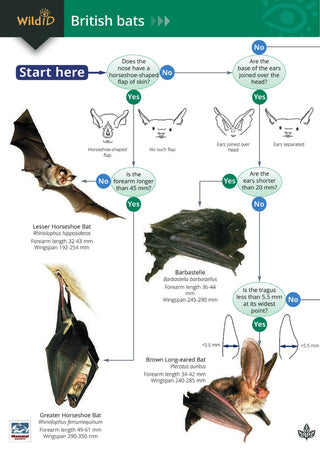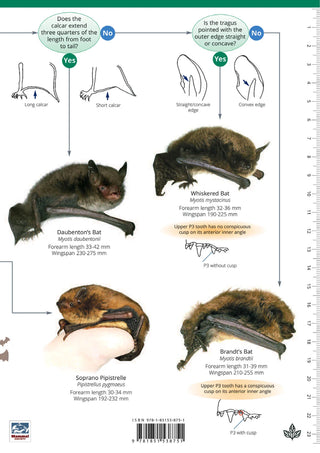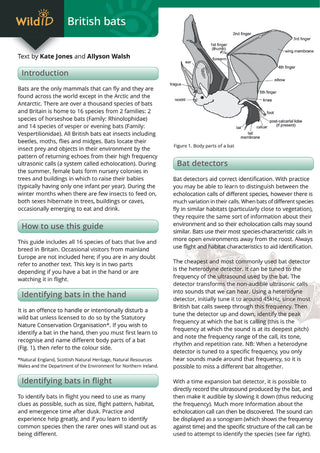There are only 16 bat species resident in Britain, compared to over a thousand species worldwide, so bats are a very manageable group to get to know.
The FSC Bats Identification Guide features all 16 British species.
The name trail is great for identifying any bats found at rest during the day, with simple yes/no questions speedily guiding you to the colour illustrations for each species.
All British bats navigate and locate their insect prey by echolocation: making high frequency ultrasonic calls and listening for the pattern of returning echoes.For bats in flight at night, a bat detector is a good way to identify species.
So for each bat species, this guide includes both:the calls typically heard when using a heterodyne detector frequency range, peak frequency and sonogram when using a time expansion detector.
But even without a bat detector, useful clues to species level can be gained by observing the flight pattern, emergence time in relation to sunset, habitat and location of roost.
The Bats Identification Guide was produced in partnership with the Mammal Society.
This chart is part of the FSC's range of fold-out charts, designed to help users identify of a wide range of plants and animals. Each chart is laminated to make it splashproof and robust for use outdoors. Clear colour illustrations and text by experts in the subject make these valuable resources for all age groups.
There are only 16 bat species resident in Britain, compared to over a thousand species worldwide, so bats are a very manageable group to get to know.
The FSC Bats Identification Guide features all 16 British species.
The name trail is great for identifying any bats found at rest during the day, with simple yes/no questions speedily guiding you to the colour illustrations for each species.
All British bats navigate and locate their insect prey by echolocation: making high frequency ultrasonic calls and listening for the pattern of returning echoes.For bats in flight at night, a bat detector is a good way to identify species.
So for each bat species, this guide includes both:the calls typically heard when using a heterodyne detector frequency range, peak frequency and sonogram when using a time expansion detector.
But even without a bat detector, useful clues to species level can be gained by observing the flight pattern, emergence time in relation to sunset, habitat and location of roost.
The Bats Identification Guide was produced in partnership with the Mammal Society.
This chart is part of the FSC's range of fold-out charts, designed to help users identify of a wide range of plants and animals. Each chart is laminated to make it splashproof and robust for use outdoors. Clear colour illustrations and text by experts in the subject make these valuable resources for all age groups.



